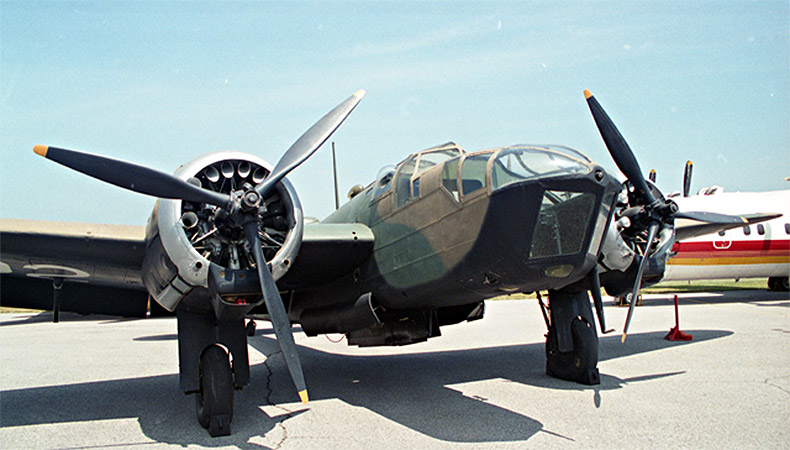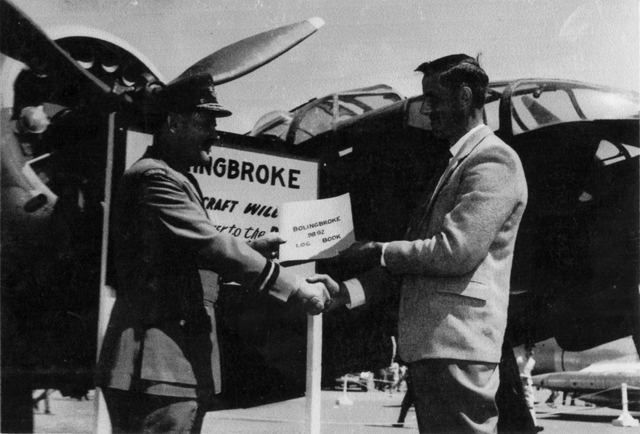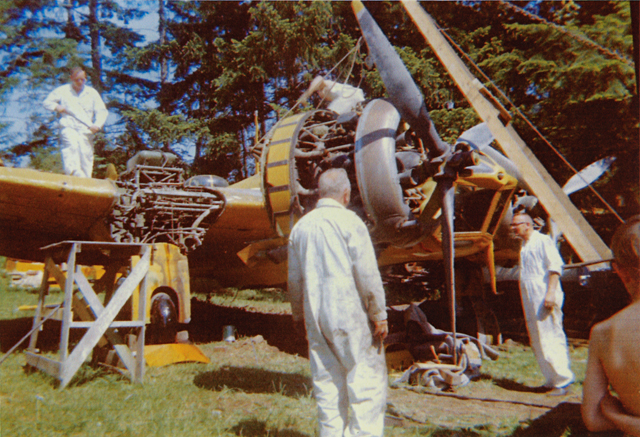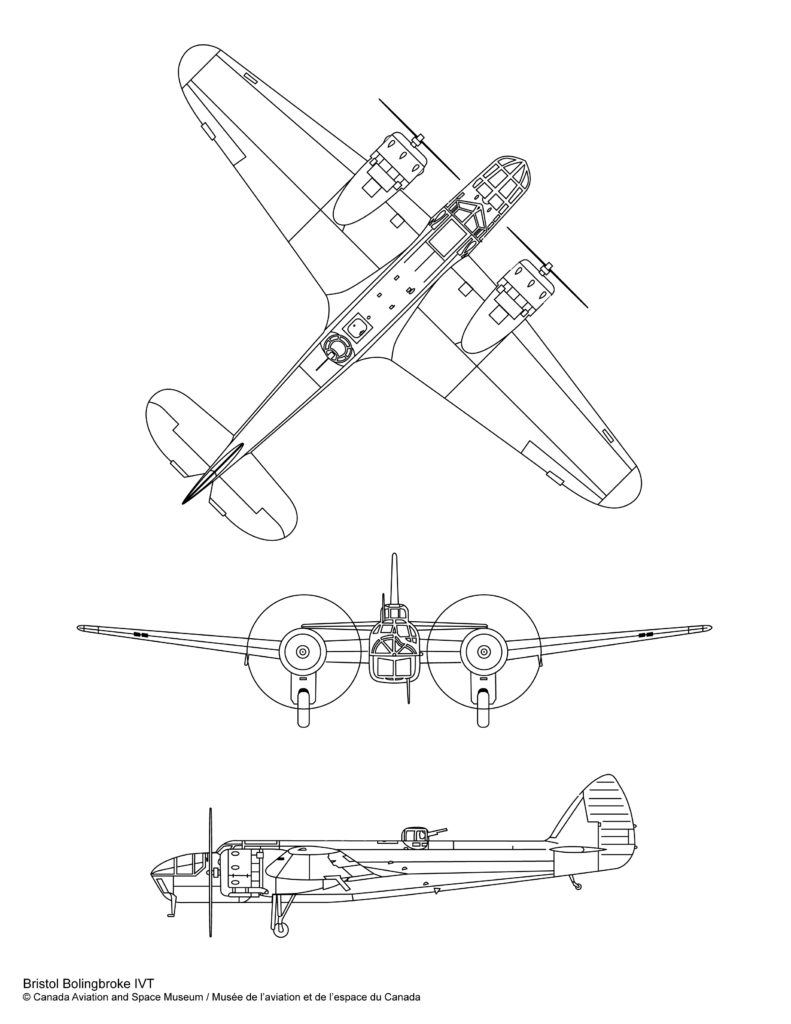Bristol Bolingbroke IVT
Highlights
- A twin-engine, coastal patrol aircraft developed by Bristol Aeroplane Company in the U.K. before the Second World War
- Made to replace the Avro Anson; based on the Bristol Blenheim light bomber, but with a greater range
- Never entered production in England, though later Blenheims were all but identical in appearance
- Produced in Canada for RCAF coastal patrol by Fairchild Aircraft Limited in Longueuil, Quebec
- Used initially to patrol Canada’s east and west coasts and Alaska, and later as a bombing and gunnery trainer and a target tug under the British Commonwealth Air Training Plan
- 1939-1943 production (in three models) reached 626; more than 400 served as trainers
- Some Bolingbrokes were sold as war surplus; several feature in museum collections around the world, some of them painted up as Bristol Blenheims
- First flight was in September 1935 (Bristol 142)

Artifact No.: 1967.0643
Manufacturer: Fairchild Aircraft Ltd.
Manufacturer location: Canada
Acquisition date: 1964
Registration number: 9892 (RCAF)
History
The Bolingbroke was a Canadian version of the Bristol Blenheim IV light bomber, which in turn had been developed from the civilian prototype Bristol 142. Although begun in England, the Bolingbroke name was dropped, except in Canada where they were built at Fairchild Aircraft Ltd. There were three versions made, including a floatplane (only one was built). After early RCAF service on coastal patrol, Bolingbrokes served through the war as bombing and gunnery trainers and as target tugs in the British Commonwealth Air Training Plan.
Production of this aircraft, with its modern, stressed skin design, initially caused some difficulty for Canadian workers, who had no previous experience with this type of construction. Following the war, some Bolingbrokes were sold as war surplus. Thirteen are known to be in museum collections around the world.
Current location
Reserve Hangar, Canada Aviation and Space Museum
Provenance
Transfer from the Royal Canadian Air Force
This Bolingbroke was manufactured by Fairchild Aircraft Limited for the RCAF in June 1942, and was briefly listed with No. 1 Training Command in Toronto before going to No. 2 Training Command in Winnipeg in July. In June 1944, it was put in storage and in September 1945 it was sold as war surplus to George A. Maude.
Maude moved the Bolingbroke to his property on Salt Spring Island, British Columbia. In 1962, he agreed to donate the aircraft to the RCAF. A Calgary company disassembled and trucked it to Alberta for restoration in May 1963. It was finished in the markings of an aircraft of No. 8 Squadron RCAF, which had used Bolingbroke IVs operationally on both coasts from 1941 to 1943. The aircraft was transported to Rockcliffe airport and officially handed over to the RCAF by Maude in an Air Force Day ceremony on June 6, 1964. The aircraft was later transferred to the Museum.
- Wing span
- 17.2 m (56 ft 4 in)
- Length
- 13 m (42 ft 9 in)
- Height
- 3 m (9 ft 10 in)
- Weight, empty
- 4,065 kg (8,963 lb)
- Weight, gross
- 6,576 kg (14,500 lb)
- Cruising speed
- 344 km/h (214 mph)
- Max speed
- 422 km/h (262 mph)
- Rate of climb
- 3,050 m (10,000 ft) / 6.6 min
- Service ceiling
- 8,660 m (28,400 ft)
- Range
- 3,138 km (1,950 mi)
- Power plant
- two Bristol Mercury XV, 920 hp, radial engines


